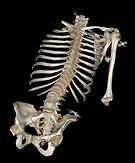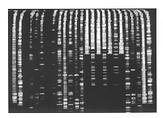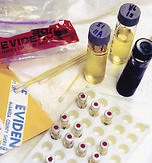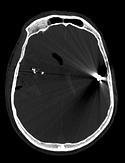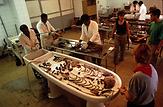The New Forensic Science
New technologies and methods are transforming the field of forensic science. Today scientists use DNA tests, high-performance liquid chromatography, mass spectrometry, 3-D computer imaging, and other advanced technologies to reconstruct crimes and accidents. The new forensic science can distinguish trace elements and organic materials down to the level of only a few hundred molecules.
Given the sensitivity of the instruments, forensic scientists need to adhere to rigorous procedures and standards to ensure that their results are valid and reliable—and can withstand scrutiny in courts of law and public opinion. Used carefully and evenhandedly, the new forensics can help uncover hidden crimes, convict the guilty, and exonerate the innocent. Sophisticated science now plays a key role in identifying victims of crimes, accidents, disasters, and wars—and provides reassurance, closure, and emotional support for bereaved survivors.
DNA forensics: making the molecular body visible
Forensic biologists conduct scientific analysis of blood, semen, saliva, and other forms of biological evidence. Their work provides crucial information in criminal investigations, paternity cases, and a variety of civil matters. During the past 20 years, DNA analysis has emerged as an indispensable method of identifying suspects and victims of crimes. Scientists continue to develop ever more sophisticated methods of identifying degraded or aged remains, along with protocols for managing data in cases where large numbers of people die or suffer injury.
Forensic toxicology: the science of chemical detection
Scientists and researchers continue to improve and discover new means of separating, analyzing, and identifying chemical substances. Techniques are becoming more specialized, and technologies are being combined to create ever more sensitive and sophisticated tests.
Two increasingly important approaches to chemical detection and identification are gas chromatography, a method of separating substances, and mass spectrometry, a method of measuring the mass of molecules. These techniques allow investigators to identify with reasonable certainty—admissible in a court of law—minute amounts of toxic substances found in the bodies of victims or in trace evidence collected at crime scenes.
Forensic radiology: making the body's interior visible
"Forensic radiology comprises the performance, interpretation, and reporting of those radiologic examinations and procedures that concern the courts and/or the law."
—B. G. Brogdon, M.D., American professor of radiology, 1998
Radiology can make images of what is hidden inside the body and is a powerful tool for the forensic investigator. Using X-rays, computed tomography (CT), magnetic resonance imaging (MRI), and other technologies, radiologists can track projectile paths inside the body, help to identify victims whose remains are degraded, and create 3-D images of the human form. Forensic odontologists analyze dental radiographs and use other imaging technologies to identify deceased individuals and to examine evidence related to teeth.
Human rights and forensic science
Forensic science now plays a vital role in exposing political murders and governmental, military, and paramilitary atrocities. Forensic human rights investigations are underway in over 30 countries, conducted by nongovernmental organizations, national truth commissions, and international tribunals. Using archaeology, forensic anthropology, pathology, odontology (the study of dentition), ballistics, computer modeling, and DNA analysis, investigators have documented mass murder and genocide, and identified victims and perpetrators.
Forensic investigations have made the "disappeared"—victims of murder and torture—visible, empowered survivors, corrected the historical record, and exposed cover-ups. In countries traumatized by brutal regimes, human rights forensics promotes democratization and the rule of law. Yet few suspected perpetrators come to trial and even fewer are convicted. In places where human rights violators retain power, forensic teams work at great personal risk, in the face of violence and intimidation.
The global reach of forensics
The Forensic Anthropology Team (EAAF in the Spanish acronym) became an international phenomenon in the early 1990s, starting projects in El Salvador and the Philippines, where governmental military and paramilitary forces had committed political murders and atrocities. Since then, EAAF members have conducted investigations throughout the Americas, Asia, Africa, and Europe. Members have presented their findings as expert witnesses in criminal trials, and before international tribunals and national truth commissions.
Inspired partly by EAAF, other human rights forensics groups have emerged to conduct investigations into political murder, torture, and genocide. Today, the International Forensics Program of Physicians for Human Rights, Inforce, the Latin American Forensic Anthropology Association, and local nongovernmental organizations are active in many countries. (PDF, 6.7 MB)
This document is in PDF format and requires Adobe Acrobat Reader.
